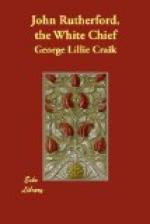“Having taken a piece of charcoal, and rubbed it upon a stone with a little water until they had produced a thickish liquid, they then dipped into it an instrument made of bone, having a sharp edge like a chisel, and shaped in the fashion of a garden-hoe, and immediately applied it to the skin, striking it twice or thrice with a small piece of wood. This made it cut into the flesh as a knife would have done, and caused a great deal of blood to flow, which they kept wiping off with the side of the hand, in order to see if the impression was sufficiently clear. When it was not, they applied the bone a second time to the same place. They employed, however, various instruments in the course of the operation; one which they sometimes used being made of a shark’s tooth, and another having teeth like a saw. They had them also of different sizes, to suit the different parts of the work.
“While I was undergoing this operation, although the pain was most acute, I never either moved or uttered a sound; but my comrades moaned dreadfully. Although the operators were very quick and dexterous, I was four hours under their hands; and during the operation Aimy’s eldest daughter several times wiped the blood from my face with some dressed flax. After it was over she led me to the river, that I might wash myself, for it had made me completely blind, and then conducted me to a great fire. They now returned us all our clothes, with the exception of our shirts, which the women kept for themselves, wearing them, as we observed, with the fronts behind.
“We were now not only tattooed, but what they called tabooed,[S] the meaning of which is, made sacred, or forbidden to touch any provisions of any kind with our hands. This state of things lasted for three days, during which time we were fed by the daughters of the chiefs, with the same victuals, and out of the same baskets, as the chiefs themselves, and the persons who had tattooed us. In three days, the swelling which had been produced by the operation had greatly subsided, and I began to recover my sight; but it was six weeks before I was completely well. I had no medical assistance of any kind during my illness; but Aimy’s two daughters were very attentive to me, and would frequently sit beside me, and talk to me in their language, of which, as yet, however, I did not understand much.”
The custom of marking the skin, called tattooing, is one of the most widely-diffused practices of savage life, having been found, even in modern times, to exist, in one modification or another, not only in most of the inhabited lands of the Pacific, from New Zealand as far north as the Sandwich Isles, but also among many of the aboriginal tribes both of Africa and America. In the ancient world it appears to have been at least equally prevalent. It is evidently alluded to, as well as the other practice that has just been noticed, of wounding the body by way of mourning, in the twenty-eighth verse of the nineteenth chapter of Leviticus, among the laws delivered to the Israelites through Moses:—“Ye shall not make any cuttings in your flesh for the dead, nor print any marks upon you,” both of these being doubtless habits of the surrounding nations, which the chosen people, according to their usual propensity, had shown a disposition to imitate.




